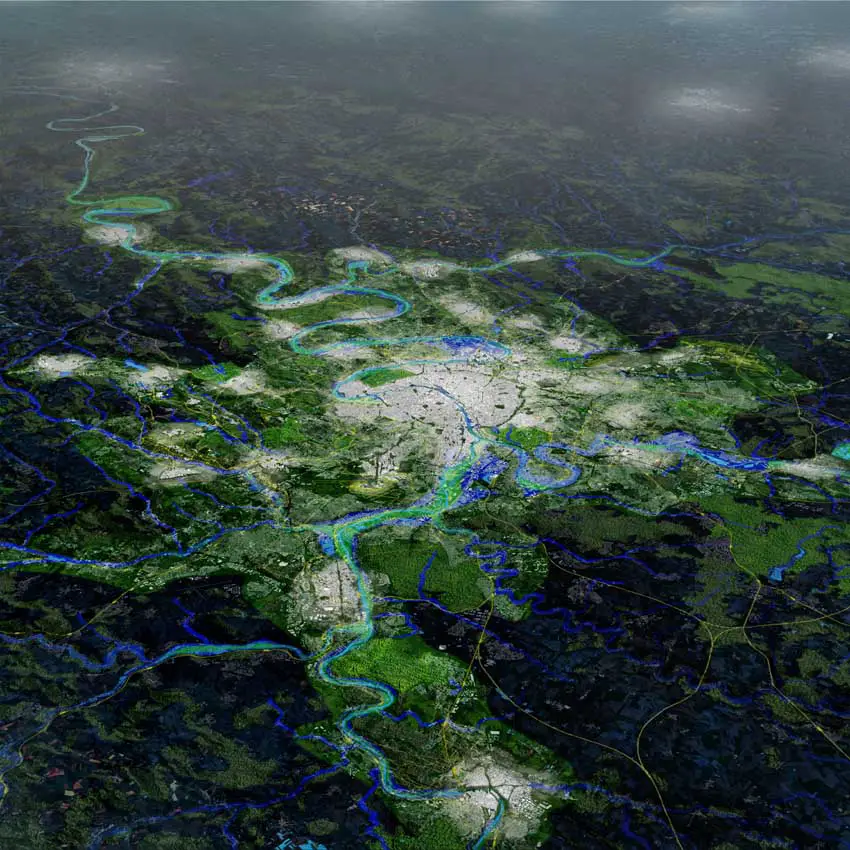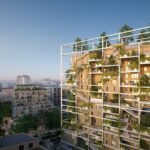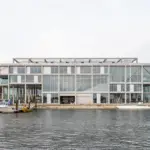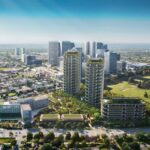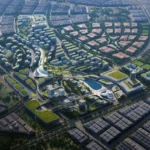Grand Paris Metropole Douce, Paris Orbital Design, French Project Pictures, News, Images
Greater Paris Proposals : Architecture
Parisian Vision design by LIN architects, France
18 Mar 2009
Greater Paris Vision
GRAND PARIS METROPOLE DOUCE
Berlin based office LIN presents its vision for Greater Paris in 2030
Bird’s eye view of Grand Paris Métropole Douce:
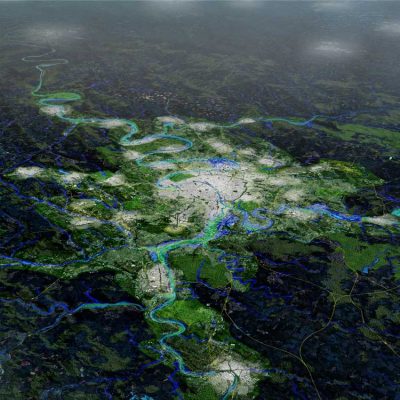
image © Davide Abbonacci + LIN
In the first public presentation of one of the biggest challenges in French urban development of the last 50 years and after a meeting with French president Nicolas Sarkozy last week, Finn Geipel is presenting today LIN’s vision for the Metropolis of the future at Palais de Chaillot in Paris. LIN’s proposal is one of ten projects of international architecture and urbanism teams commissioned by Nicolas Sarkozy in June 2008 to overcome the big challenge of turning Paris into a sustainable world city reacting to the demands of the Kyoto protocol.
LIN proposes to transform the model of the “European City” into a prototype for future urban development. Paris, shining capital of France that is encircled by neglect, shall become the ambassador of metropolitan change. Grand Paris, as imagined by LIN, is no longer in stagnation and stressed by traffic, pollution or mediocrity. It represents an environment full of chances and discoveries, well prepared to face future challenges instead: Grand Paris Metropole Douce.
Top view of the orbital BRT system – Greater Paris Proposals:
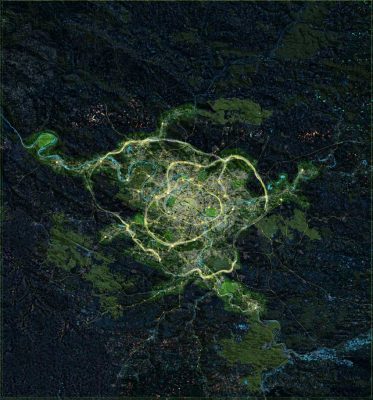
image © Fabio Casiroli, Systematica + LIN
LIN envisions a compact and multipolar metropolis that 13 million inhabitants will live in. It is an environment that engages urban qualities and natural wealth. Clearly visible to the outside and understood as an overall entity, Metropole Douce refocuses the existing metropolitan area.
Inherent capacities as found in the extraordinary beauty, in the economic strength or in the historic values of built up areas and in natural resources are points of departure. This transformation strategy of until now unprecedented dimensions is based on structural changes. Combining transdisciplinary design strategies, Metropole Douce approaches the social, the political, and the ecological and economical challenges of the future on all scales.
Comparison of accessibility within 45 minutes by current public transportation and new BRT system – Example from Charles de Gaulle:
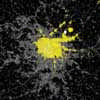
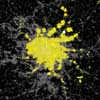
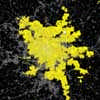
pictures © Fabio Casiroli, Systematica
LIN has developed its project in a team of international scientists, philosophers and experts, together with the universities of the MIT and Harvard, Boston and the TU Berlin, in three phases: A metropolitan comparison was followed up by the definition of sustainable development strategies for a metropolis that respects the Kyoto-Protocol and faces the climatic changes. Finally the group’s findings were synthesized in a spatial project suitable for application to Paris. Grand Paris Metropole Douce is characterized by:
Dense City – Light City: On the one hand, the territory will feature an interlinked system of stable urban and natural polarities. These densely populated areas of high urban quality – the Dense City – thus can be found close to natural spaces of unique charm.
Programmatic needs and programmatic innovation are translated into new and mixed building typologies and in multifunctional landscapes of high sustainability and resiliance. Clearly distinct in use, in history or in shape they encircle and enrich the heart of the capital. On the other hand, surrounding the urban and natural polarities, zones of lower density and higher flexibility – the Light City – are reinterpreted as breeding grounds for innovation with high potentials.
The implementation of different scales and building patterns into the monofunctional context that frequently marks those environments, support the development of new neighbourhoods and multilateral identities. An integrated system of “Eco-Stations” ameliorates distribution of goods, services and information and allows for easy access to modern urban lifestyle. LIN’s conceptual approach proposes to establish a master framework for an overall redesign of the Parisian metropolis. The concept is to envigurate the innovative potential of each neighbourhood.
Graduated mobility: Maintaining individual mobility and the possibility of easy accessibility within an urbanized area of almost 2000 sqm is crucial for the urban environment’s capacity to embrace future. Innovative systems of macro- and micromobility are integrated into the body of the Grand Paris Metropolis.
Urban river landscapes: A system of neglected riverbanks of the rivers Seine, Marne and Oise currently traverses the metropolitain area of Paris. Here the project focuses on the development of a new, multi-functional landscape system that gives special consideration to watercourses and the riverbanks. The ecological functions of water, including natural purification and energy-generating technologies, the development of new logistical and mobility systems, and the integration of residential and recreational facilities create a new type of urbanity in these landscape spaces, a “Seine Parc”.
Said to be the most ambitious French urban design project after Haussmann’s huge transformations of Paris in the 19th century, the work of the 10 teams will be soon on display in an exhibition at “Cité de l’Architecture et du patrimoine” from April 29th until 22nd November 2009.
Grand Paris Métropole Douce images / information from LIN 180309
Location: Paris, France
New Paris Architecture
Contemporary Paris Architecture
Paris Architecture Design – chronological list
Paris Architecture Walking Tours by e-architect
Greater Paris Vision by MVRDV
LIN is a European agency for architecture and urbanism based in Berlin and Paris. Led by Finn Geipel and Giulia Andi, it develops architectural projects as well as urban and landscape projects. Flexibility, open programming, building in context and the reduction of resource consumption are recurring issues.
The method may best be described as an integrative approach. A team of consultants from different fields participate in our projects (construction engineering, climate concepts, lighting, philosophy, art, design, urban programming, information design, theory of architecture, ecology, urban economy). LIN’s permanent research platform is LIA, the Laboratory for Integrative Architecture at the Technische Universität Berlin.
Paris Architecture – Selection
Robert A.M. Stern Architects
Tour Carpe Diem
C42 – Citroën display building
Manuelle Gautrand
C42 Citroen
Comments / photos for the Grand Paris Metropole Douce Architecture Proposals page welcome
Websites : www.lin-a.com; www.citechaillot.fr, www.legrandparis.net

